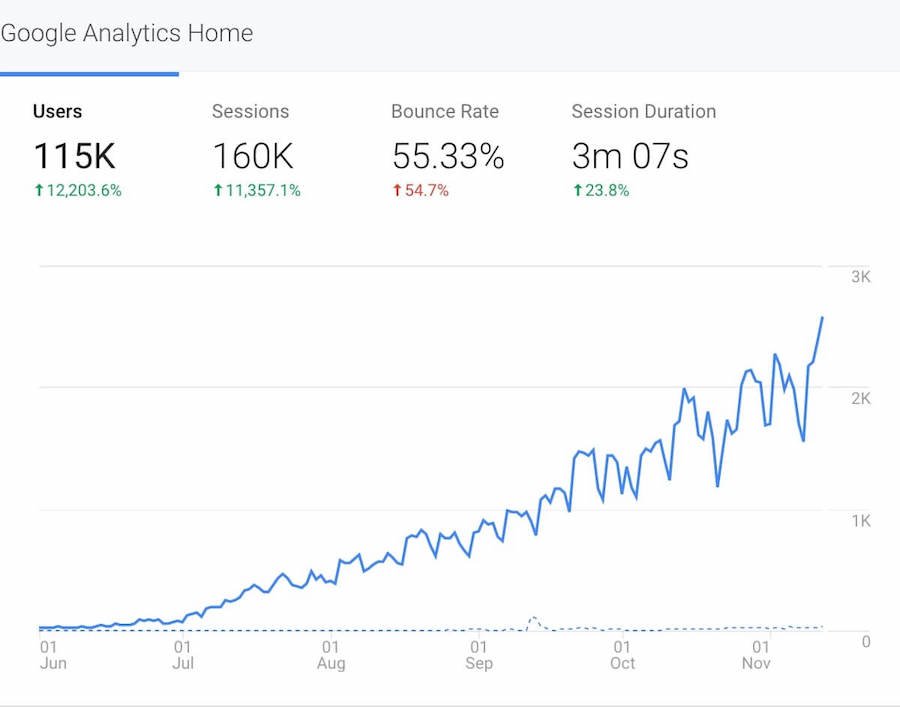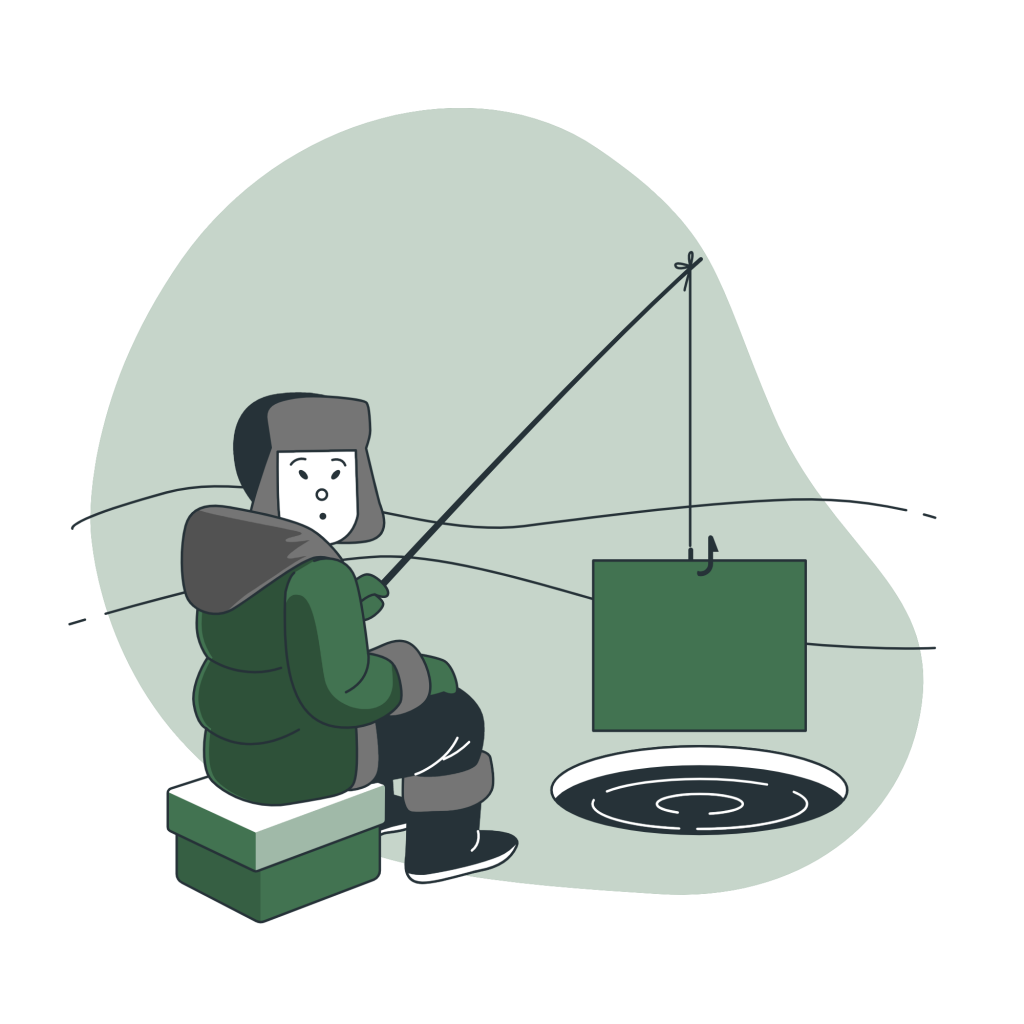
You are not alone! Attracting readers (and therefore, potential leads and customers) to your blog can often feel like a hardcore battle, and, at the end of the day, it really is.
People don’t have much time and the amount of online content keeps growing, which means that there is an unprecedented fight for consumers’ attention. Marketers know that users have a limited amount of time to consume content and they will do pretty much anything to get their content into the spotlight.
An example of that is the overdone, loud thumbnails on YouTube where bright colours, people displaying exaggerated emotions and oversized text are used to grab the attention of someone scrolling through the feed.
Another example is the so-called clickbait, which refers to the practice of using sensationalised or deceptive titles (that act as “bait”).
Since marketers have heavily abused the latter, online readers have become very wary of these sorts of titles. I’m sure we’ve all clicked an article with a screaming title only to find ourselves sorely disappointed with the actual content.
Regardless of whether it’s a blog article, a podcast or a YouTube video, people will almost always choose to click through based on the title and the summary. Even if your content is pure gold, if you don’t make your title and initial paragraph interesting, no one will ever know, because they simply won’t click on it.
What does this mean for all of us?
Titles and intros are VERY IMPORTANT.
Based on what we’ve just discussed, you need something in between the clickbaity title and the boring one. So, let me introduce you to…
THE HOOK

In terms of general marketing, a “hook” may refer to things like taglines, slogans, etc. When it comes to content, however, a hook is the formulation of your offer composed in the most attractive way possible for your target audience. =
Hooks are nothing new and indeed they have existed since the dawn of time or at least the beginning of newspapers, though it’s debatable whether typical headlines should be defined as hooks or clickbait.
Good hooks are undoubtedly the main factor determining why people will read your content. A twist on a familiar subject will certainly make your piece more intriguing and unique, yet the hook is what gets people to even notice it in the first place.
Now that we know what the hook is, let’s see together some practical tips in regards to creating outstanding content hooks.
1. Speak Directly To Their Need
Your first sentence should immediately have the reader nodding along, thinking 'Yes, I have that problem!' or 'Yes, I want that!'Whichever of the following techniques you use in your opening sentence, make sure it's always speaking to a genuine need that your target reader has. Don't waste time with fluff. Get right to the meat of that need.
Not only does this grab the reader's attention, but it also shows them that you understand them. And it also promises an efficient writing style. They see that you're not going to waste their time, and so they'll be willing to read a little more.
2. Ask a Question
The human mind is a question-answering machine. If we hear or read a question, it's difficult not to think about the answer. Wouldn't you agree? This is especially true when the question is about something already looming large in our thoughts.The purpose of your question could simply be to have them say 'Yes,' so they want to read more. As you may have noticed, I used that at the beginning of our article, because it’s fairly indicative of what I’m offering to teach you.
This is typically more adequate for hooks not within the title, but for subtitles of initial paragraphs, for example:
'Want to sell more pastries in your bakery? Here are 5 tips that are sure to help.'
Alternatively, you could bring a painful problem to their mind:
'Are you suffering from unsightly acne? Fortunately, there's a simple solution which is 100% based on your diet.'
You could ask a thought-provoking multiple choice question, such as:
'Quick question. Which of these factors is going to be most important for SEO in 2022?
- Quality of content
- Backlinks
- Keyword selection'
Or you might simply use a question to pique their curiosity:
'Did you ever wonder why your cat winks at you?'
3. Use the Magic Word 'You'
Yes, the ego will play a role even when it comes to the smallest things like this. We all know people love personalised items, but what may surprise you is that they equally love to read the words “you” and “your” (in lieu of a name).Give your post an instantly personal feel by using these magic words in the first few lines.
No matter the industry, good blogs usually have a conversational style, where it's appropriate to address the reader directly in this way, as though you're friends having a chit-chat. It's simple, but it works.
“10 Best Products to Hydrate Your Skin in the Winter”
“How to Keep Your Home Clean with Minimal Effort: 15 Practical Tips”
'If you need to find a freelancing job fast, there are three ways to go about it.'
'Worried you might lose your key clients? Read these 7 methods to rebuild their trust and loyalty to you.'
4.Begin with a Success Story
As human beings, we're easily gripped by stories, especially if the story speaks to an experience or struggle in our own lives. Success stories in particular are inspiring in a way that few other things are for people.You can provide this inspirational boost to your reader, starting with the very first words of your post. Tell your own success story, that of an existing customer of yours, or a story about someone else you know. Here's how you might open such a post:
'When I first decided to launch my own business, I was faced with two problems. I had zero starting capital and zero guidance...'
Success stories can also be used in titles, even if it seems counterintuitive to confine them in a few words. It may look something like this:
“How I got to 20K Visits per Day Using only Content and Zero Ads”
When you know your customer well, you know the success they're seeking to attain. Most likely, your brand can help them get there.
In your posts, tell stories that take them along that journey to success in their mind's eye. This not only grabs their attention, but it also allows you to bond with the reader over your shared problem.
5. Reveal a Shocking Fact or Statistic
Ideally, you want your reader to experience a little burst of emotion at the start of your post. One way to achieve this is by sharing a shocking tidbit of info, ideally, a fact or statistic relating to your market.'Kids today get almost half their daily calories from junk food.'
'Did you know that surfing is one of the oldest sports in the world? Prehistoric stone carvings found in China show people surfing 5,000 years ago.'
If you've been in your industry for a while, you've likely already discovered a few surprising facts like these. If not, you can always spend a little time researching, and you're likely to dig up a few gems.
6.Share a Powerful Quote
A few words of thought-provoking wisdom can be a fine way to open a blog post. Ideally, you should use a quote by someone your reader knows and respects.It could be someone who is very well-known, a household name, or someone who is only famous within your industry. If the quote itself is good enough, then the individual needn't be known to the reader at all. It can still have an impact.
You might use an inspiring quote:
"Success is the ability to go from failure to failure without losing your enthusiasm." - Winston Churchill
Or a quote with some practical, actionable wisdom:
"Creativity is your best makeup skill, don't be afraid to experiment." - Pat McGrath
Or a humorous quote:
"There is a fine line between fishing and just standing on the shore like an idiot." ― Steven Wrigh
7. Have Them Picture It
Humans are very visual, and so one quick way to grasp someone's attention is to have them follow you visually.In your very first sentence, you can have your reader imagine a scene, perhaps something they desire, or something they fear.
The simple word 'Imagine' is very powerful. You can also say 'Picture this' or 'Can you remember a time when...' For example:
'Imagine you're about to give an important speech to a hall full of people and then, suddenly, your mind goes blank.'
'Picture this. You're driving your moped along a sunny road in Thailand, headed for the beach. All your visa worries are behind you.'
'Can you remember a time when you left your keys in the house and locked yourself out?'
Final Thoughts
Above all, remember that in front of you there are actual human beings and not just potential customers. Don’t try to trick them - try to intrigue them!If you genuinely offer something valuable, all you have to do is catch their attention with a content hook and your content will do the rest.


